Your cart is currently empty!
Month: July 2024
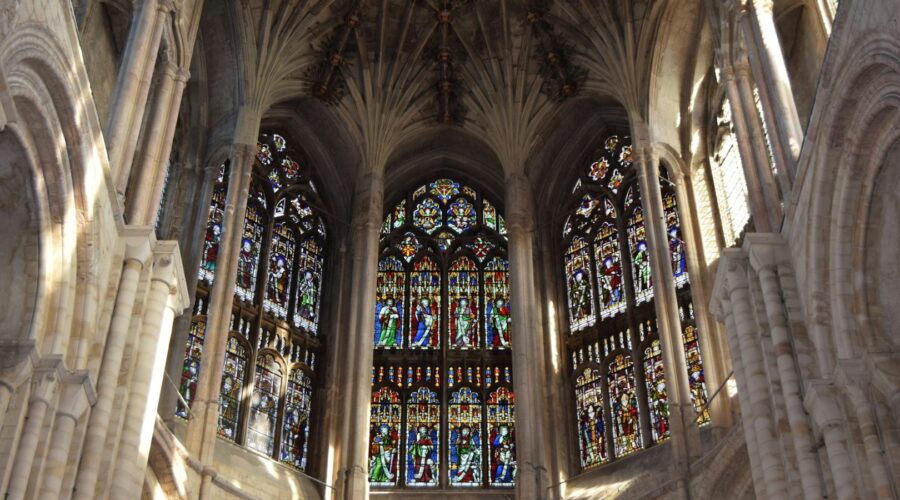
Assumption of the Blessed Virgin Mary: A Comprehensive Guide
Introduction
The Assumption of the Blessed Virgin Mary is a significant event in Christianity that celebrates the belief that Mary, the mother of Jesus Christ, was taken up into heaven with her body and soul intact. This event is observed by various Christian denominations, including the Catholic Church, Eastern Orthodox Church, and Anglican Communion, among others.
Historical Development
The belief in Mary’s Assumption has roots in early Christian traditions but gained prominence in the Middle Ages. In the 6th century, Emperor Maurice made it an official feast day in the Byzantine Empire. By the 8th century, the feast had become widely celebrated in the West.
Biblical Basis
While not explicitly mentioned in the Bible, the Assumption is believed to be supported by various passages:
- Psalm 45:13-15: “The bride is radiant, clothed in gold and priceless gems. She is led to the king in a robe of gold-woven cloth and embroidered linen.”
- 1 Corinthians 15:42-44: “So also is the resurrection of the dead. The body that is sown is perishable, it is raised imperishable; it is sown in dishonor, it is raised in glory; it is sown in weakness, it is raised in power; it is sown a natural body, it is raised a spiritual body.”
Theological Significance
The Assumption of Mary holds several theological implications:
Mary’s Immaculate Conception
The Assumption reinforces the belief that Mary was conceived without original sin. If she was taken up into heaven with her body, it indicates her sinlessness and purity.
Mary’s Role in Salvation History
The Assumption represents Mary’s unique role in the history of salvation. As the mother of Christ, she is seen as a mediator between God and humanity.
Human Participation in Divine Glory
The Assumption offers a glimpse of the hope for human resurrection and participation in God’s glory. Mary’s Assumption shows that the human body, despite its mortality, is capable of being transformed and glorified.
Liturgical Celebrations
The Assumption is typically celebrated on August 15th in the Western Church and August 28th in the Eastern Orthodox Church. The feast is marked by:
- Solemn Mass or Divine Liturgy
- Processions and Marian devotions
- Floral offerings to the Virgin Mary
Artistic Depictions
The Assumption of Mary has been a popular subject in Christian art throughout history. Notable depictions include:
- Titian, “Assumption of the Virgin” (1516-1518)
- El Greco, “The Assumption of the Virgin” (1577-1579)
- Peter Paul Rubens, “The Assumption of the Virgin” (1626-1628)
Devotional Practices
Devotional practices associated with the Assumption include:
- Marian prayers: Hail Mary, Magnificat, Rosary
- Veneration of Mary’s relics: Certain objects are believed to be associated with Mary, such as her veil, girdle, and tomb.
- Pilgrimages to Marian shrines: Lourdes, Fatima, and Guadalupe are popular pilgrimage sites dedicated to Mary.
Conclusion
The Assumption of the Blessed Virgin Mary is a significant event that holds both historical and theological significance in Christianity. It reflects the belief in Mary’s unique role in salvation history, her Immaculate Conception, and the hope for human resurrection and participation in God’s glory. The Assumption continues to be celebrated with devotion and reverence by Christians around the world.
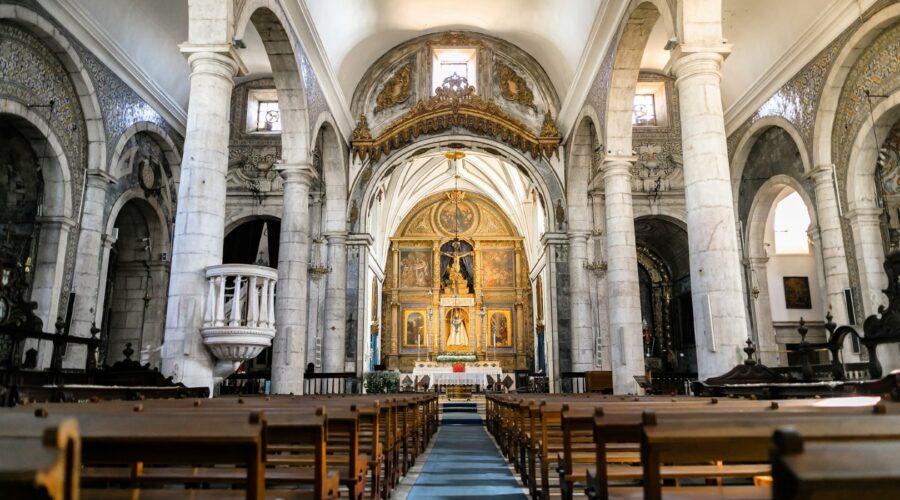
Understanding the Heidelberg Catechism: A Comprehensive Guide
Introduction
The Heidelberg Catechism is a widely-used Reformed Protestant catechism, formulated in 1563 during the Reformation. It was developed in the city of Heidelberg, Germany, and is considered one of the most influential Reformed theological documents. This catechism has been translated into numerous languages and remains a vital resource for understanding Reformed theology.
Structure of the Catechism
The Heidelberg Catechism is divided into three main parts:
- Concerning Misery: Explores the nature and consequences of sin.
- Concerning Redemption: Discusses salvation through Jesus Christ.
- Concerning Thankfulness: Addresses how believers should respond to their salvation.
Key Concepts
Concerning Misery
- Total Depravity: Humans are incapable of any good apart from God’s grace.
- Original Sin: All humans are born with a sinful nature.
- Consequences of Sin: Sin leads to condemnation and eternal death.
Concerning Redemption
- Jesus Christ as Savior: Jesus Christ is the only mediator between God and humanity.
- Faith: Salvation is received through faith in Christ’s sacrifice.
- Justification: God declares believers righteous based on Christ’s work.
- Sanctification: Believers are progressively transformed through the Holy Spirit.
Concerning Thankfulness
- Gratitude: Believers should express gratitude for their salvation.
- Obedience: Believers are called to live holy and obedient lives.
- Worship: Believers should worship God in gratitude and praise.
Significance of the Heidelberg Catechism
- Doctrinal Foundation: It provides a comprehensive summary of Reformed theology.
- Pastoral Tool: It has been used for centuries to instruct and encourage believers.
- Educational Resource: It is a valuable resource for understanding Christian doctrine.
- Unity and Identity: It has played a role in fostering unity and identity among Reformed churches.
- Read it devotionally: Use the catechism for daily meditation and reflection.
- Study it systematically: Go through the catechism question by question, seeking a deeper understanding.
- Discuss it with others: Join a study group or discuss the catechism with a mentor or pastor.
- Apply it to your life: Reflect on how the teachings of the catechism relate to your own faith and practice.
Historical Context
The Heidelberg Catechism was developed in the context of the Protestant Reformation. It sought to summarize Reformed doctrine during a time of significant theological and political turmoil. The catechism was written by a group of theologians led by Zacharias Ursinus and Caspar Olevianus.
Reception and Impact
The Heidelberg Catechism was initially met with resistance, but it gradually gained acceptance within the Reformed churches. It has had a profound impact on Reformed theology and piety. It continues to be used today by many Reformed denominations as a foundational document.
Tips for Using the Catechism
Conclusion
The Heidelberg Catechism is a valuable resource for understanding Reformed theology. It provides a concise and comprehensive summary of Christian doctrine, offering guidance and encouragement to believers. By studying and applying the teachings of this catechism, individuals can deepen their understanding of the Christian faith and grow in their relationship with God.

Discover St. Matthew Catholic Church: A Spiritual Haven in the Heart of the Community
An Overview of St. Matthew Catholic Church
Nestled in the vibrant city of [City Name], St. Matthew Catholic Church stands as a beacon of faith and a pillar of the community. Serving the spiritual needs of its parishioners for over [Number] years, the church has played a pivotal role in shaping the lives of countless individuals and families.
Guided by the teachings of Jesus Christ and the Catholic tradition, St. Matthew Catholic Church is a welcoming and inclusive parish that embraces individuals from all walks of life. Through a diverse range of ministries, programs, and outreach initiatives, the church strives to create a vibrant and fulfilling spiritual experience for its members.
The History of St. Matthew Parish
St. Matthew Catholic Church traces its roots back to [Year], when a small group of faithful Catholics gathered to worship in a humble chapel on the outskirts of [City Name]. As the community grew, so did the need for a larger and more permanent place of worship.
In [Year], the present-day church building was erected on a generous plot of land donated by a devout parishioner. Designed in a beautiful Gothic Revival style, the church features intricate stained-glass windows, soaring arches, and a grand altar that serves as a focal point of the sanctuary.
Spiritual Ministries and Activities
St. Matthew Catholic Church offers a wide range of spiritual ministries and activities to cater to the diverse needs of its parishioners.
Mass Schedule and Sacraments
- Sunday Mass: [Time] (English)
- Saturday Vigil Mass: [Time] (English)
- Weekday Masses: [Times] (English)
St. Matthew Catholic Church also celebrates the sacraments of Baptism, Confirmation, Eucharist, Reconciliation, Anointing of the Sick, and Matrimony.
Prayer Groups and Devotions
- Rosary Prayer Group: Meets [Day and Time]
- Divine Mercy Chaplet: Every [Day of the Week] at [Time]
- Eucharistic Adoration: [Day and Time]
Adult Education and Bible Studies
- Bible Study: [Day and Time]
- RCIA (Rite of Christian Initiation of Adults): [Day and Time]
- Adult Catechesis: [Day and Time]
Community Outreach and Service
St. Matthew Catholic Church firmly believes in the importance of reaching out to the wider community and serving those in need.
Social Justice Initiatives
- Food Pantry: Provides food assistance to families in need
- Clothing Drives: Collects and distributes clothing to the homeless
- Soup Kitchen: Serves meals to the hungry in the community
Parish Nursing Ministry
A dedicated team of nurses provides health education, screenings, and referrals to parishioners and the community.
Youth and Family Activities
- Youth Group: Provides faith formation, social activities, and service opportunities for youth
- Children’s Liturgy of the Word: Engages children during Mass with age-appropriate lessons
- Family Events: Hosts gatherings and activities for families to connect and grow together
Getting Involved at St. Matthew Catholic Church
St. Matthew Catholic Church welcomes all individuals to participate in its vibrant community. Whether you are seeking spiritual growth, community service, or simply a welcoming and supportive environment, there are countless ways to get involved:
- Attend Mass and participate in the sacraments
- Join a prayer group or Bible study
- Volunteer in one of the many outreach programs
- Become a lector, usher, or altar server
To learn more about St. Matthew Catholic Church, its ministries, and ways to get involved, visit the parish website at [Website Address].
Contact Information
St. Matthew Catholic Church
Address: [Address]
Phone: [Phone Number]
Email: [Email Address]
Mass Schedule Sacraments Ministries - Sunday Mass: [Time] (English)
- Saturday Vigil Mass: [Time] (English)
- Weekday Masses: [Times] (English)
- Baptism
- Confirmation
- Eucharist
- Reconciliation
- Anointing of the Sick
- Matrimony
- Prayer Groups
- Devotions
- Adult Education
- Social Justice Initiatives
- Parish Nursing Ministry
- Youth and Family Activities
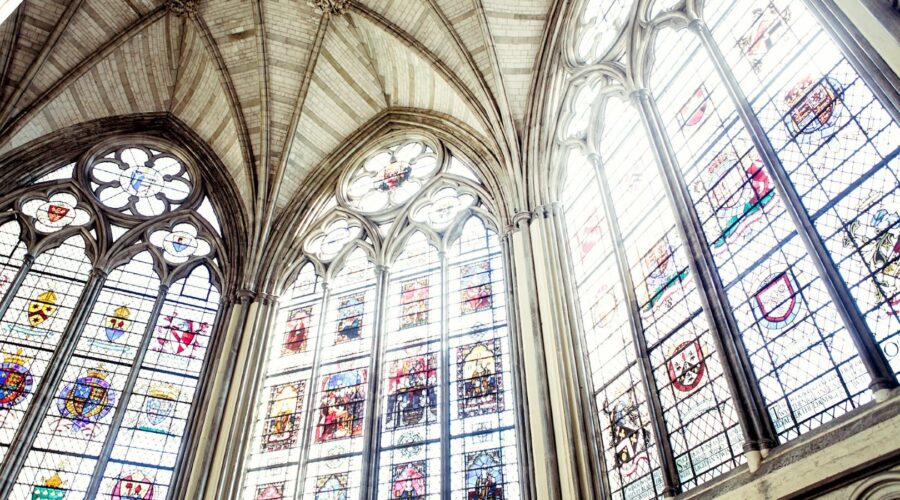
The First Pentecostal Church: A Historical Journey
The Pentecostal movement, characterized by its emphasis on the baptism of the Holy Spirit and speaking in tongues, has its roots in the early 20th century. The First Pentecostal Church, founded in 1906 in Los Angeles, California, played a pivotal role in the spread of Pentecostalism worldwide.
Origins and Founders
The First Pentecostal Church originated from a small group of believers led by William J. Seymour, an African American preacher. Seymour, influenced by the teachings of Charles Parham, believed that speaking in tongues was a sign of the baptism of the Holy Spirit.
On April 9, 1906, during a prayer meeting at the Azusa Street Revival, Seymour and several others experienced the baptism of the Holy Spirit, accompanied by speaking in tongues. This event marked the beginning of the Pentecostal movement.
Core Beliefs and Practices
The First Pentecostal Church adhered to the following core beliefs:
- The baptism of the Holy Spirit, evidenced by speaking in tongues, was a necessary experience for salvation.
- The Bible was the sole authority for faith and practice.
- Divine healing was available to all believers.
- The second coming of Christ was imminent.
Worship services at the First Pentecostal Church were characterized by:
- Intense prayer and praise
- Prophecy and other spiritual gifts
- Preaching and teaching focused on the baptism of the Holy Spirit
- Lay participation in ministry
Growth and Impact
From its humble beginnings, the First Pentecostal Church grew rapidly. By 1914, there were over 200 Pentecostal congregations worldwide. Missionaries sent out from the church played a significant role in spreading Pentecostalism to Asia, Africa, and Latin America.
The First Pentecostal Church influenced the development of Pentecostal denominations such as the Assemblies of God, the Church of God in Christ, and the United Pentecostal Church.
Legacy and Influence
Today, the First Pentecostal Church remains a thriving congregation in Los Angeles. It has also established a network of churches and ministries worldwide.
The Pentecostal movement, born at the First Pentecostal Church, has had a profound impact on Christianity. Pentecostal denominations account for over 600 million adherents worldwide, making it one of the fastest-growing segments of Christianity.
Conclusion
The First Pentecostal Church played a crucial role in the birth and growth of the Pentecostal movement. Its emphasis on the baptism of the Holy Spirit, its commitment to Scripture, and its dynamic worship services have influenced countless lives and continue to shape the Pentecostal experience today.
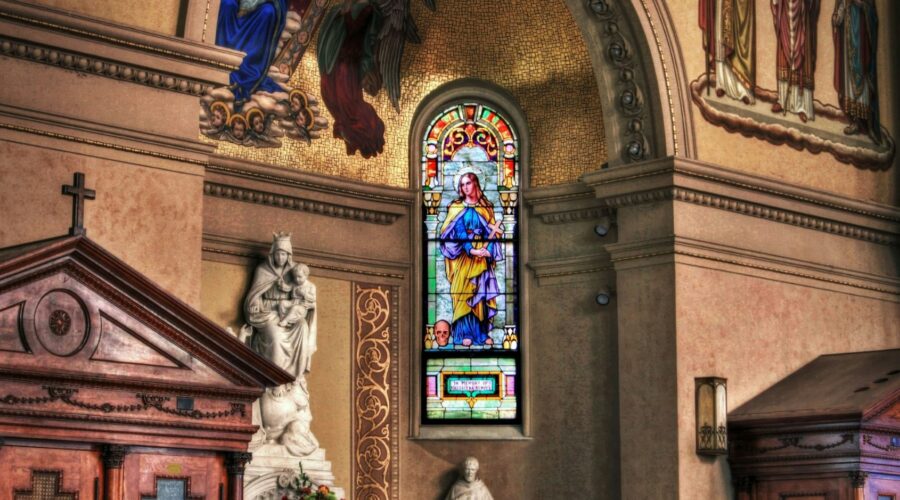
Discover the Gateway to Grace: Understanding Grace Point
Grace point, a concept steeped in theology and spirituality, holds immense significance for those seeking divine favor and personal transformation. This comprehensive guide delves into the essence of grace point, exploring its multifaceted nature, practical implications, and profound impact on our spiritual journey.
What is Grace Point?
Grace point refers to the transformative moment when an individual experiences the overwhelming, unmerited favor of God. It is a point of encounter where divine mercy intersects with human need, leading to a profound shift in perspective and a renewed sense of purpose.
Key Aspects of Grace Point:
- Gratuitous: Grace is freely given, not earned through works or merit.
- Transformative: It empowers individuals to overcome sin, embrace righteousness, and live in alignment with God’s will.
- Empowering: Grace provides strength and resilience to navigate life’s challenges and fulfill God’s calling.
Pathways to Grace Point
Grace point is not a destination but rather a continuous journey of encountering and receiving God’s favor. Here are some pathways that facilitate this transformative encounter:
Prayer:
Prayer, a channel of communication with God, creates a space for us to experience his grace. Through heartfelt conversations, we surrender our burdens and open our hearts to receive his blessings.
Scripture Study:
The Bible, God’s inspired word, contains countless accounts of grace extended to individuals throughout history. Meditating on these passages reminds us of the unfailing love and mercy of our Creator.
Worship:
Worship, an act of adoration and praise, aligns our hearts with God’s presence. In the midst of worship, we are enveloped by his grace, which fills us with joy and gratitude.
The Impact of Grace Point
The experience of grace point has a profound and lasting impact on our lives. Here are some key benefits:
Salvation:
Grace point is the gateway to salvation. Through faith in Jesus Christ, we receive forgiveness for our sins and become reconciled with God, experiencing the fullness of his grace.
Sanctification:
Grace empowers us to live holy lives, overcoming the temptations and challenges that come our way. It transforms our character and enables us to reflect Christ’s likeness.
Empowerment:
Grace provides us with strength and resources to fulfill our God-given purpose. It sustains us through adversity and equips us to minister to others.
Practical Applications
The principles of grace point can be applied to our daily lives to cultivate a deeper relationship with God and live in alignment with his will. Here are some practical tips:
Embrace God’s Mercy:
Remember that grace is freely given and available to all who seek it. Don’t dwell on past mistakes or shortcomings but trust in God’s unconditional love for you.
Extend Grace to Others:
Just as we receive God’s grace, we are called to extend grace to others, forgiving their offenses and showing compassion and kindness.
Seek Guidance:
If you feel stuck or discouraged, seek guidance from trusted spiritual mentors who can help you navigate the journey of grace.
Conclusion
Grace point is a transformative encounter with God’s unmerited favor that empowers us to live a life of purpose, joy, and fulfillment. By embracing the principles of grace, we experience salvation, sanctification, and empowerment, enabling us to walk in the footsteps of Christ and impact the world for his glory.
Remember, the journey of grace is an ongoing one. As we continue to seek God’s grace, we will discover its transformative power in every aspect of our lives.
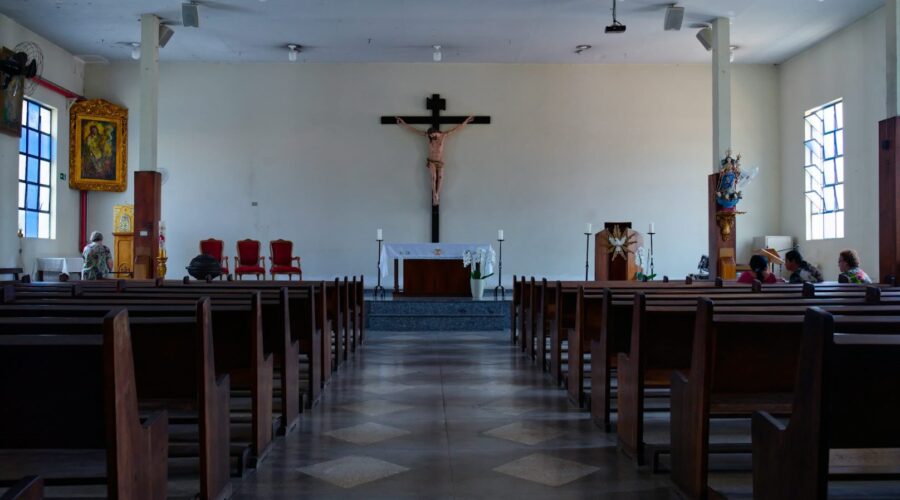
St. Michael’s Catholic Church: A Haven of Faith and History
Embracing a rich heritage that spans centuries, St. Michael’s Catholic Church stands as a beacon of faith and a testament to the enduring spirit of the Catholic community. Nestled in the heart of a vibrant city, this hallowed sanctuary invites you to step into a world of spirituality, history, and architectural grandeur.
A Journey Through Time: The History of St. Michael’s
The Formative Years:
The roots of St. Michael’s Church can be traced back to the late 18th century, when a small group of Irish immigrants established a parish in the city. In 1806, a modest chapel was constructed, serving as the spiritual home for the growing Catholic community.
Expansion and Transformation:
As the Catholic population flourished, St. Michael’s embarked on an ambitious expansion project in the mid-19th century. The original chapel was replaced by a grand Gothic Revival sanctuary, designed by renowned architect James Renwick Jr. The new church, consecrated in 1858, became a symbol of the Catholic faith’s growing prominence in the city.
A Century of Growth and Service:
Throughout the 20th century, St. Michael’s continued to expand its ministry, adding a school, a convent, and a gymnasium to its complex. The church played a vital role in the community, providing spiritual guidance, education, and social services to generations of Catholics.
Architectural Splendor: A Symphony of Gothic Revival
St. Michael’s Catholic Church is an architectural masterpiece, showcasing the Gothic Revival style at its finest. Its soaring spires, intricate stained glass windows, and vaulted ceilings create an atmosphere of awe and inspiration.
Intricate Stained Glass Windows:
The church’s interior is adorned with stunning stained glass windows, each depicting a scene from Scripture or the life of a saint. The vibrant colors and exquisite craftsmanship add to the sanctuary’s ethereal beauty.
Imposing Spires and Bell Tower:
Two majestic spires, each reaching a height of over 200 feet, dominate the church’s exterior. The spires are topped by intricate crosses, symbolizing the triumph of faith. The bell tower houses a set of 12 bells, which chime out melodious tunes throughout the day.
Elegant Interior:
Inside, the church’s nave is supported by graceful columns and vaulted ceilings. The walls are lined with stunning murals, depicting Biblical scenes and the history of the parish. The altar, carved from Carrara marble, is a focal point of the sanctuary.
A Vibrant Community: Faith, Fellowship, and Service
Beyond its architectural beauty, St. Michael’s Catholic Church is a thriving community of faith. The parish offers a wide range of ministries, programs, and events that cater to the spiritual and social needs of its members.
Mass and Sacraments:
The heart of St. Michael’s worship is the celebration of the Eucharist, offered daily and on weekends. The parish also administers the sacraments of Baptism, Confirmation, Reconciliation, and Marriage.
Education and Formation:
St. Michael’s is committed to the spiritual and intellectual growth of its members. The parish offers a comprehensive religious education program for children and adults. The church also hosts lectures, workshops, and retreats.
Outreach and Social Services:
Inspired by the teachings of Christ, St. Michael’s actively engages in outreach and social services. The parish supports various charities, provides assistance to the needy, and operates a food pantry.
Visiting St. Michael’s: A Guide for Pilgrims and Tourists
Location and Contact Information:
St. Michael’s Catholic Church is located at 123 Main Street, City, State 12345.
Phone: (555) 123-4567
Email: [email protected]
Website: www.stmichaelsparish.orgVisiting Hours:
The church is open daily from 9:00 AM to 5:00 PM. Guided tours are available by appointment.
Mass Times:
Day Time Monday 8:00 AM Tuesday 12:15 PM Wednesday 7:00 PM Thursday 9:00 AM Friday 12:15 PM Saturday 4:00 PM (Confession)
5:00 PMSunday 8:00 AM, 10:00 AM, 12:00 PM Accessibility:
St. Michael’s is wheelchair accessible and provides assistive listening devices for the hearing impaired.
Tips for Visitors:
- Dress respectfully when visiting the church.
- Be mindful of the sacred nature of the space and maintain silence.
- Take time to admire the church’s architecture and artwork.
- Consider attending a Mass or service to experience the vibrant community.
Conclusion: A Legacy of Faith and Community
St. Michael’s Catholic Church stands as a testament to the enduring power of faith and the transformative nature of community. Its rich history, architectural splendor, and vibrant ministries have made it a beloved landmark and a source of spiritual sustenance for generations of Catholics.
Whether you are a devout parishioner, a history enthusiast, or simply seeking a place of peace and inspiration, St. Michael’s Catholic Church invites you to step into its hallowed halls and experience the unwavering spirit of faith that has guided its journey through time.
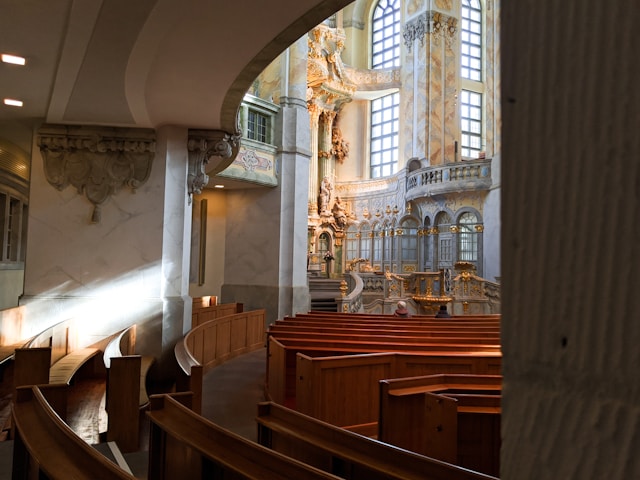
Hillsong Megachurch: Comprehensive Guide to Beliefs, Controversies, and Impact
Hillsong Church is a global Pentecostal megachurch with its headquarters in Sydney, Australia. Founded in 1983 by Brian and Bobbie Houston, Hillsong has grown to become one of the most recognizable and influential churches in the world.
Beliefs
- The Bible is the infallible Word of God.
- There is one God who exists in three persons: the Father, the Son, and the Holy Spirit.
- Jesus Christ is the Son of God and the Savior of the world.
- The Holy Spirit is the third person of the Trinity and indwells believers.
- Salvation is a free gift from God that is received by faith in Jesus Christ.
- The Church is the body of Christ and is called to make disciples of all nations.
- The end times will culminate in the return of Jesus Christ and the establishment of a new heaven and a new earth.
Controversies
Hillsong has not been without its controversies. In recent years, the church has been criticized for its:
- Financial practices.
- Handling of sexual abuse allegations.
- Social media presence.
Financial Practices
Hillsong has been criticized for its financial practices, particularly its use of tithes and offerings. Critics accuse the church of using its wealth to fund lavish lifestyles for its leaders.
Handling of Sexual Abuse Allegations
Hillsong has also been criticized for its handling of sexual abuse allegations. In 2022, former Hillsong pastor Carl Lentz was fired after admitting to an affair. Lentz was later accused of sexual abuse by several women. Hillsong has been accused of mishandling the allegations and failing to protect victims.
Social Media Presence
Hillsong has a large and active social media presence. The church’s social media accounts are often used to promote its music, events, and teachings. However, Hillsong has also been criticized for using social media to promote a carefully crafted image of itself.
Impact
Despite the controversies, Hillsong has had a significant impact on the Christian world. The church’s music, events, and teachings have influenced millions of people around the world. Hillsong has also played a role in the growth of the Pentecostal movement.
Music
Hillsong is known for its contemporary worship music. The church’s music has been recorded by a variety of artists, including Hillsong United, Hillsong Worship, and Hillsong Young & Free. Hillsong’s music is often characterized by its upbeat melodies and catchy lyrics.
Events
Hillsong hosts a variety of events throughout the year, including conferences, concerts, and youth camps. These events draw hundreds of thousands of people from around the world. Hillsong’s events are known for their high-energy atmosphere and focus on worship.
Teachings
Hillsong’s teachings are based on the Bible. The church’s pastors often focus on practical ways to live out their faith in everyday life. Hillsong’s teachings have been influential in the Christian world, particularly among young people.
Conclusion
Hillsong Church is a global megachurch with a significant impact on the Christian world. The church’s beliefs, controversies, and impact have all been the subject of much discussion and debate. Hillsong is a complex and multifaceted organization, and its legacy will continue to be debated for years to come.
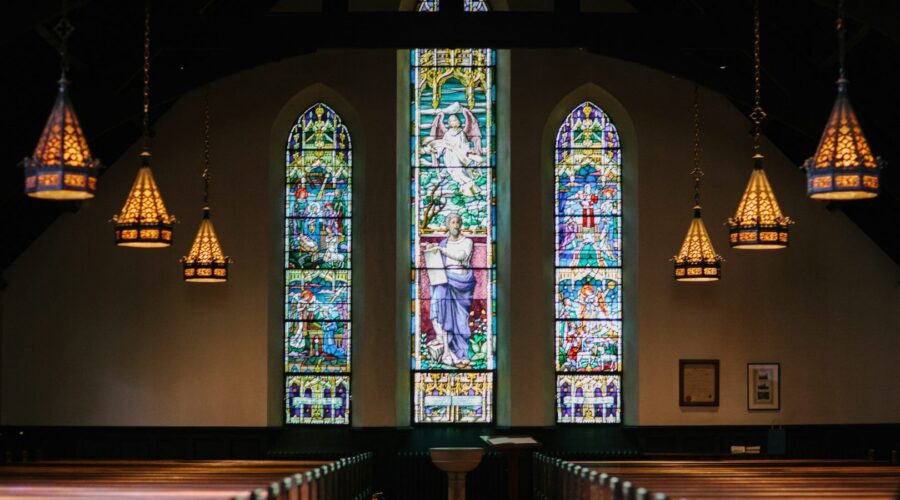
Adventist Today: A Comprehensive Guide to the Adventist Lifestyle
What is Adventism?
Adventism is a Protestant Christian denomination that emphasizes the Bible as the sole source of religious authority. Adventists believe that Jesus Christ will soon return to earth to establish His kingdom, and they live their lives in preparation for this event. They are known for their emphasis on health, education, and mission.
History of Adventism
Adventism originated in the 19th century in the United States. William Miller, a Baptist preacher, predicted that Jesus would return to earth in 1844. When Jesus did not return as predicted, Miller’s followers were disappointed. However, some of them continued to believe in Miller’s teachings, and they became known as Adventists.
Key Beliefs of Adventism
- The Bible is the sole source of religious authority.
- Jesus Christ is the Son of God and the Savior of the world.
- Jesus will soon return to earth to establish His kingdom.
- Adventists must live their lives in preparation for Jesus’ return.
- Adventists believe in the importance of health, education, and mission.
Lifestyle of an Adventist
Adventists live their lives in accordance with the principles of the Bible. They believe that God has created them to be healthy, happy, and productive. They emphasize the importance of eating a healthy diet, getting regular exercise, and avoiding harmful substances.
Health
Adventists are known for their emphasis on health. They believe that God has created the human body to be a temple, and they strive to keep their bodies healthy and strong. Adventists eat a vegetarian diet, and they avoid alcohol, tobacco, and other harmful substances.
Education
Adventists believe that education is essential for a well-rounded life. They operate a worldwide system of schools and universities. Adventist education emphasizes the development of the whole person, including the physical, mental, and spiritual aspects.
Mission
Adventists believe that they have a mission to share the gospel of Jesus Christ with the world. They are involved in a variety of mission activities, including evangelism, education, and medical work.
Challenges Facing Adventists
Adventists face a number of challenges in today’s world. These challenges include:
- Secularism: The increasing secularization of society is making it more difficult for Adventists to share their faith with others.
- Division: There are a number of different Adventist denominations, and there is sometimes division and conflict between them.
- Persecution: Adventists have faced persecution in some parts of the world.
Conclusion
Adventism is a vibrant and growing Christian denomination. Adventists are known for their emphasis on health, education, and mission. They are a people who are committed to living their lives in accordance with the principles of the Bible and who are looking forward to the soon return of Jesus Christ.
Additional Resources
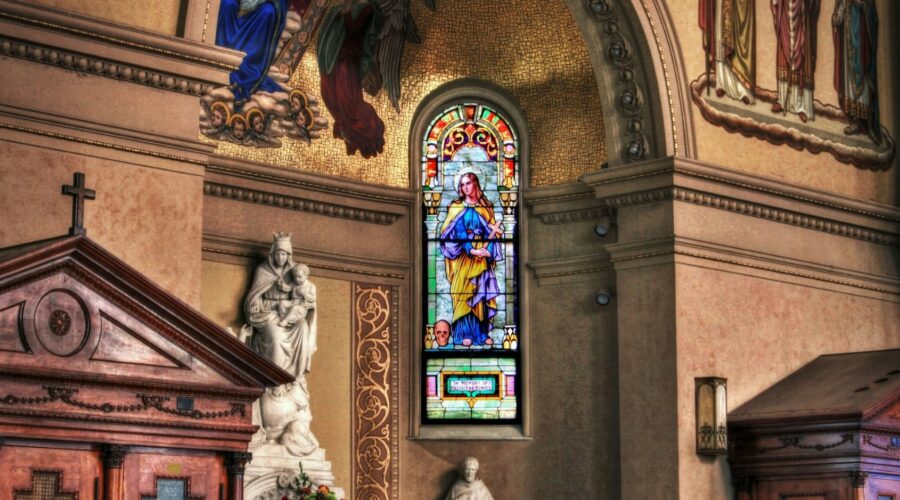
Discover the Essence of Epiphany Church: A Beacon of Faith and Community
In the realm of spirituality and community, the Epiphany Church stands as a beacon of hope, offering a transformative journey of faith and fellowship. This humble abode of worship has woven its tapestry of belief and service into the fabric of countless lives, leaving an enduring legacy of love and enlightenment. Embark on a comprehensive exploration of Epiphany Church, unraveling its rich history, vibrant ministries, and unwavering dedication to serving the community.
The Genesis: A Foundation of Faith
The seeds of Epiphany Church were sown in the early 20th century, when a group of devout Episcopalians gathered in a modest chapel. Their unwavering faith and desire for spiritual growth led to the establishment of a permanent church in 1921, a testament to their enduring commitment to serving the community through the teachings of Christ.
A House of Worship: Inspiring Sanctuary and Beyond
The architectural beauty of Epiphany Church reflects the grandeur of its mission. The sanctuary, adorned with intricate stained glass windows and soaring arches, invites a sense of awe and reverence. The church’s welcoming atmosphere extends beyond its walls, as it offers a vibrant space for community events, meetings, and gatherings.
Sunday Services: A Tapestry of Worship and Fellowship
Sundays at Epiphany Church are a symphony of faith and camaraderie. The traditional service, held at 9:00 AM, blends the beauty of liturgy with inspiring sermons. Contemporary worship, at 11:15 AM, offers a lively and uplifting experience, featuring contemporary music and a relevant message. Following the services, the congregation gathers for a warm and friendly coffee hour, fostering a sense of community and connection.
Midweek Worship: A Sanctuary for Spiritual Growth
Throughout the week, Epiphany Church provides opportunities for midweek worship and spiritual enrichment. Wednesday evening gatherings offer a blend of traditional and contemporary worship, Bible study, and fellowship.
Ministries: Embracing Service and Outreach
The Epiphany Church family extends its compassion far beyond the sanctuary walls through its diverse ministries. These transformative programs offer support, guidance, and a sense of belonging to the community.
Mission and Outreach: A Heart for the Needy
Epiphany Church actively engages in mission and outreach programs, both locally and globally. The church supports various organizations dedicated to providing food, shelter, and assistance to those in need. Through these initiatives, the church embodies the teachings of Christ, reaching out to the less fortunate and making a tangible difference in the world.
Christian Education: Nurturing Faith and Knowledge
Epiphany Church places a strong emphasis on Christian education, offering a comprehensive range of programs for all ages. Sunday school classes, Bible study groups, and retreats provide opportunities for spiritual growth, deepening understanding of the faith, and fostering a lifelong love of learning.
Music and Arts: A Symphony of Faith and Creativity
Music and arts play an integral role in the worship and community life of Epiphany Church. The choir, handbell choir, and contemporary worship band enhance the liturgy with beautiful and inspiring music. Additionally, the church hosts concerts, art exhibitions, and other cultural events, creating a vibrant and enriching environment.
Community: A Tapestry of Love and Support
Epiphany Church is not merely a building or an institution; it is a vibrant community where people come together to share their lives, offer support, and grow together in faith. The church fosters a welcoming and inclusive environment, embracing individuals from all walks of life.
Fellowship Groups: A Place to Connect and Belong
Epiphany Church offers a variety of fellowship groups, providing opportunities for members to connect on a deeper level. These groups, such as men’s and women’s groups, small group Bible studies, and social clubs, create a sense of belonging and provide a supportive network.
Pastoral Care: A Sanctuary of Healing and Hope
The pastors and staff of Epiphany Church are dedicated to providing pastoral care and support to the congregation and the community. Through confidential counseling, hospital visits, and other services, the church offers a compassionate and supportive presence during times of need.
Conclusion: A Beacon of Hope and Inspiration
Epiphany Church stands as a testament to the power of faith and the transformative spirit of human connection. Its rich history, diverse ministries, and unwavering commitment to community have touched the lives of countless individuals. As a beacon of hope and inspiration, the church continues to guide and support its members on their spiritual journeys, fostering a sense of belonging, purpose, and eternal connection.
Whether you are seeking a place to worship, connect with like-minded individuals, or simply explore your spiritual side, Epiphany Church welcomes you with open arms. Join the vibrant community and embark on a transformative journey of faith, service, and fellowship.
Service Time Traditional Worship 9:00 AM Contemporary Worship 11:15 AM Midweek Worship and Bible Study Wednesday, 7:00 PM - For more information about Epiphany Church, visit their website at www.epiphanychurch.org.
- To learn more about the Episcopal Church, visit the official website at www.episcopalchurch.org.
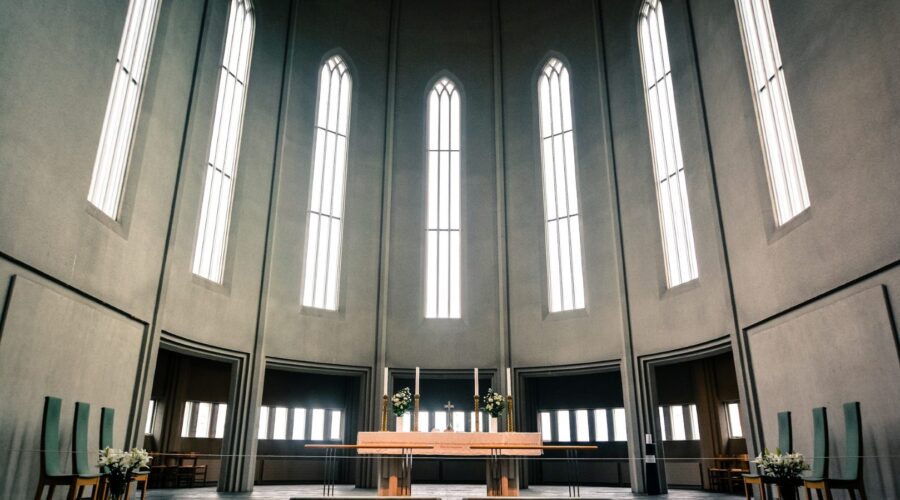
Unveiling Orthodox Religion: A Comprehensive Guide to Beliefs, Practices, and Traditions
Introduction
Orthodox religion encompasses a rich tapestry of beliefs, practices, and traditions that have profoundly shaped the lives of countless individuals throughout history. This comprehensive guide delves deep into the intricacies of Orthodoxy, exploring its history, doctrines, sacraments, and significance in the lives of its adherents.
History and Origins
Orthodox religion traces its origins to the early days of Christianity, claiming apostolic succession from the teachings of Jesus Christ and the original apostles. Following the Council of Chalcedon in 451 AD, the Eastern Orthodox Church separated from the Western Catholic Church, establishing an independent ecclesiastical tradition that has endured for centuries.
Key Beliefs
- Monotheism: Belief in one God, the Trinity: Father, Son, and Holy Spirit.
- Christology: Jesus Christ as both fully divine and fully human, born of the Virgin Mary and crucified for the salvation of humanity.
- Incarnation: The belief that God became fully human in the person of Jesus Christ, uniting the divine and human natures.
- Resurrection: The belief that Jesus Christ rose from the dead, conquering sin and death.
- Sacraments: Seven sacraments, including Baptism, Eucharist, and Confession, are believed to convey grace and strengthen the bond between believers and God.
Practices and Traditions
- Liturgy: Orthodox liturgy involves elaborate rituals, prayers, and hymns, often accompanied by incense and iconography.
- Fasting: Periods of fasting and abstinence from certain foods are observed throughout the year to prepare for major feasts and as a spiritual discipline.
- Pilgrimage: Pilgrimage to holy sites, such as Mount Athos, Jerusalem, and Kiev, is regarded as a spiritual journey to connect with the saints and seek blessings.
- Iconography: Orthodox Christians venerate icons, which are believed to be windows into the divine and to facilitate prayer and connection with the saints.
- Eastern Tradition: Orthodox Christianity emphasizes the importance of Eastern philosophy, particularly Neoplatonism, in interpreting Christian teachings.
Branches of Orthodox Religion
- Greek Orthodox: The largest branch, based in Greece and Cyprus, but also present worldwide.
- Russian Orthodox: The second largest branch, with a strong presence in Russia and other Slavic countries.
- Serbian Orthodox: The predominant church in Serbia, which has played a significant role in the country’s history and culture.
- Antiochian Orthodox: A branch originating in the Middle East, primarily in Syria and Lebanon.
- Coptic Orthodox: A branch that emerged in Egypt, preserving ancient traditions and rituals.
Contemporary Significance
- Spiritual Guidance: Orthodox religion provides spiritual guidance, comfort, and community for believers.
- Cultural Heritage: It preserves and enriches cultural heritage through its art, music, architecture, and traditions.
- Interfaith Dialogue: Orthodox Christianity engages in interfaith dialogue with other religions to promote understanding and cooperation.
- Social Justice: Many Orthodox churches are actively involved in social justice initiatives, advocating for the poor, marginalized, and oppressed.
- Mission Work: Orthodox missionaries spread the faith and establish new communities in various parts of the world.
Conclusion
Orthodox religion offers a profound and enduring spiritual path that transcends cultural boundaries and time. Its beliefs, practices, and traditions provide believers with guidance, meaning, and connection with the divine. As a living and vibrant faith, Orthodoxy continues to shape the lives of millions worldwide, inspiring a deep sense of purpose, community, and hope.
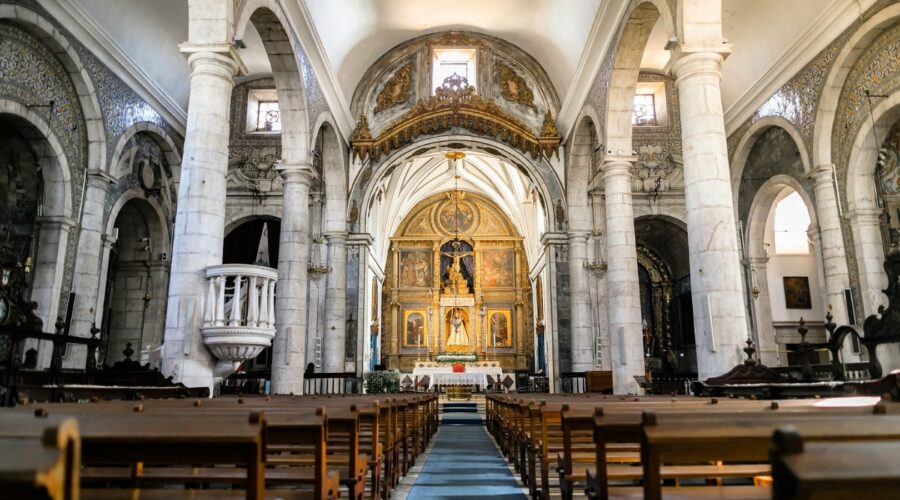
Discover the Essence of Open Door Baptist Churches: A Comprehensive Guide
Introduction
Open Door Baptist churches are autonomous congregations characterized by their unwavering commitment to biblical principles and a welcoming spirit. These churches emphasize the importance of personal faith in Jesus Christ as the sole means of salvation and strive to create a nurturing environment for spiritual growth.
Core Beliefs
Open Door Baptist churches adhere to a set of core beliefs that define their theological foundation:
- Sola Scriptura (Scripture Alone): The Bible is the sole authoritative source of truth for faith and practice.
- Sola Fide (Faith Alone): Salvation is a gift from God received through faith in Jesus Christ alone.
- Sola Gratia (Grace Alone): God’s grace is the sole means by which sinners can be saved.
- Christ’s Lordship: Jesus Christ is the sovereign Lord of the church and the lives of all believers.
- Priesthood of All Believers: All Christians have direct access to God through prayer and Bible study.
Distinctive Features
Biblical Authority and Independence
Open Door Baptist churches prioritize the Bible as their ultimate authority. They believe that the Bible is without error and sufficient for Christian living. Each congregation is autonomous, making decisions independently based on biblical principles.
Evangelistic Emphasis
These churches are passionate about sharing the gospel of Jesus Christ with their communities and the world. They engage in outreach programs, evangelistic preaching, and missions to spread the message of salvation.
Congregational Worship
Worship in Open Door Baptist churches is typically simple and focused on biblical principles. It includes singing hymns, reading Scripture, preaching, and prayer. The emphasis is on corporate worship and seeking God’s presence.
Personal Discipleship
Churches prioritize personal discipleship and growth. They provide opportunities for Bible study, prayer groups, and mentoring programs to help believers deepen their relationship with God.
Family Values
Open Door Baptist churches emphasize the importance of strong family relationships. They promote biblical principles for marriage, parenting, and child-rearing.
Benefits of Attending
Attending an Open Door Baptist church offers numerous benefits for believers:
- Biblical Teaching: Access to sound biblical teaching that emphasizes salvation through faith in Jesus Christ.
- Christian Community: A supportive and welcoming community where believers can connect, share faith, and encourage one another.
- Spiritual Growth: Opportunities for personal discipleship, Bible study, and mentoring to foster spiritual growth.
- Evangelistic Opportunities: Involvement in outreach programs to share the gospel and make a difference in the community.
- Strong Families: Emphasis on biblical values for marriage, parenting, and child-rearing.
Finding an Open Door Baptist Church
To find an Open Door Baptist church near you, consider the following steps:
- Online Search: Use search engines or directories to search for churches in your area.
- Word of Mouth: Ask friends, family, or acquaintances if they know of any Open Door Baptist churches.
- Visit a Website: Many churches have websites where you can learn about their beliefs and ministries.
- Attend a Sunday Service: Visit a few churches to experience their worship and teachings firsthand.
Conclusion
Open Door Baptist churches offer a vibrant and welcoming faith community centered around biblical principles. Their emphasis on Scripture as the sole authority, the power of the gospel, and the importance of personal discipleship makes them a valuable resource for believers seeking spiritual growth and community.
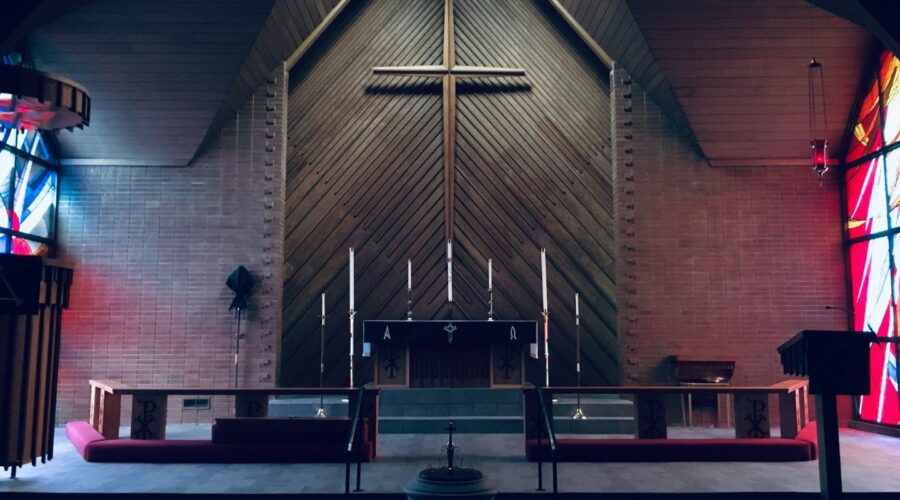
Phoebe: The Female Deacon of the Bible
Introduction
Phoebe, a prominent figure in the New Testament, holds a unique distinction as the first female deacon mentioned in the Bible. Her story, found in the book of Romans, sheds light on the active role women played in the early Christian church.
Servant in the Church
Deaconess of Cenchreae
Phoebe was a resident of Cenchreae, a port city near Corinth. She served as a deaconess (Greek: diakonos) of the church there. The term “deaconess” was used in the early church to refer to women who assisted in practical ways, such as caring for the sick, widows, and orphans.
Phoebe’s role as a deaconess was not limited to her local community. She was also a respected messenger and representative of the Cenchreae church.
Ministry to Paul
Phoebe’s most notable contribution was her assistance to the apostle Paul. She carried a letter from the church in Cenchreae to Rome, introducing him and requesting that he be welcomed by the Roman Christians (Romans 16:1-2).
Phoebe’s service to Paul extended beyond delivering the letter. She was also a faithful companion and helper during his travels.
Commendation from Paul
In his letter to the Romans, Paul highly commends Phoebe for her work and character. He describes her as a:
- Sister (Romans 16:1)
- Helper of many (Romans 16:2)
- Patron of Paul (Romans 16:2)
- Benefactress of others (Romans 16:2)
Paul’s words reveal that Phoebe was a highly respected and active member of the Christian community. She was known for her generosity, compassion, and willingness to serve others.
Significance for Women
Phoebe’s story is significant for several reasons:
Recognized Leadership
Phoebe’s role as a deaconess demonstrates that women were recognized leaders in the early church. Although their roles may have been different from men’s, they were valued and essential to the functioning of the church.
Active Participation
Phoebe’s ministry shows that women were actively involved in the work of the church. They were not confined to domestic spheres but participated in preaching, teaching, and leadership.
Example of Service
Phoebe’s example of selfless service inspires believers today. She reminds us that Christian ministry is not limited to ordained clergy but is a calling for all who follow Jesus.
Conclusion
Phoebe, the female deacon of the Bible, was a remarkable woman who served the early Christian church with great distinction. Her story reminds us that women have always played an important role in the Kingdom of God and that their leadership, service, and example continue to be a blessing to the church today.